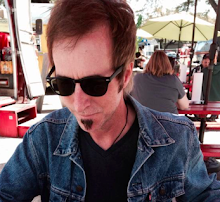The secret of a successful social media strategy starts with
who is in the middle. And that’s not any different than the philosophical and
practical approach any successful physician or clinic takes to his/her efforts.
Well, at least when the patient is the one at the center of the effort.
I recently read an
excerpt from Dr. Toby Cosgrove’s book “The Cleveland Clinic Way” that reminded
me how challenging it can be to put the patient at the center of our work. And
simultaneously, how imperative it is that we do just that. You may know Dr.
Cosgrove as the President and CEO of Cleveland Clinic.
Early on in his efforts toward being “patient centered”,
Cleveland Clinic had decided to reassign the reserved parking spaces near the
front of its buildings to patients, not doctors. One physician complained,
“What’s this, patients first and doctors last?”
Other physicians wondered whether reform promoting kindness
and compassion was necessary. They said, “Dr. Smith is kind of mean to people,
but he’s a great surgeon” as if that were enough. Being a great is surgeon is
about being technically proficient and treating patients well.
Cosgrove recognized that we live in a time when technology
has leveled the playing field with respect to the outcomes patients might receive
at competing hospitals. But Cleveland Clinic could differentiate itself by
treating its patients well and creating a true healing experience.
Through conversations with patients and their families the
clinic learned that many were frustrated by access to medical records. So, they
made them accessible. They learned that patients found visiting hours to be a
major irritant. This info with data they had on the role of family in healing drove
a decision to open visiting hours to “whenever…and to spend as much time as
they like” with the exception of the Intensive Care Unit.
Look, you’re not reading this to learn what the Cleveland Clinic did or is doing but it seems a fitting metaphor for the things we talk about with social media. So here....
Like the issue with the parking spaces, many think that
practice social media policies should revolve around the doctor’s convenience. A
policy wherein doctors aren’t directed to share health information via an
occasional tweet might be convenient. But it’s not improving patient health
outcomes for those with chronic conditions whose Twitter newsfeeds are filled
with hash tag rich tweets concerning their disease from every source but you.
Oh sure, there’s always the risk that the “mean doctor” will
be exposed via social media through something he says that demonstrates
indifference. But in all likelihood, patients and families who share their
feelings about “customer satisfaction” on Facebook pages, Yelp and Angie’s List
have already exposed him. Help him improve his bedside manner one post or tweet
at-a-time. Yeah, bedside manner. Smartphones have become as common on the
nightstand as grandma’s dentures. And many – maybe even your grandma - are
using social media first thing every day and last thing they do at night.
And then there was this, a Cleveland Clinic team enlisted a
designer to create an alternative to the traditional open back gown. Their goal
was to address the frequent patient complaints about the indignity and
discomfort they suffered when wearing them. Good for them. But, I couldn’t help
imagine how much fun it would have been to engage patients in developing a
solution via a simple Pinterest board. So I googled “hospital gowns on
Pinterest” and got 279,000 results.
Come on, Doc. Let’s be social. By the way, the Cleveland
Clinic is great model for that, too. They’re @ClevelandClinic on Twitter.

